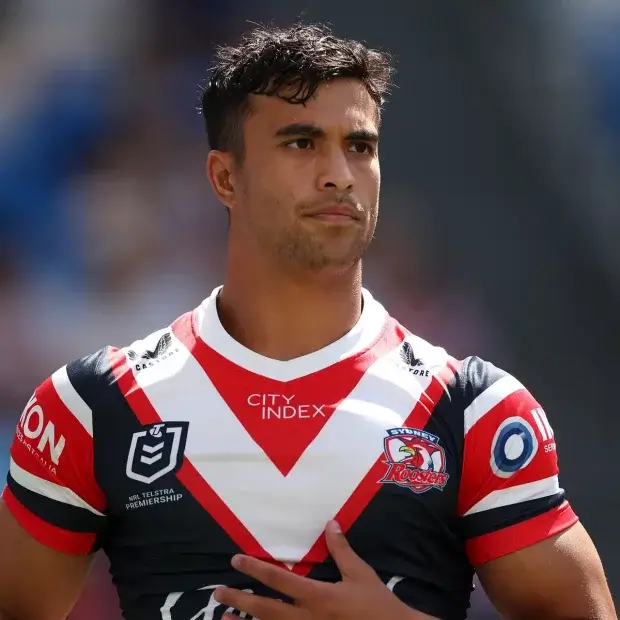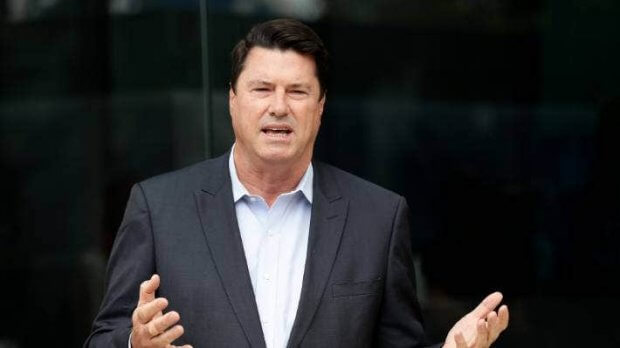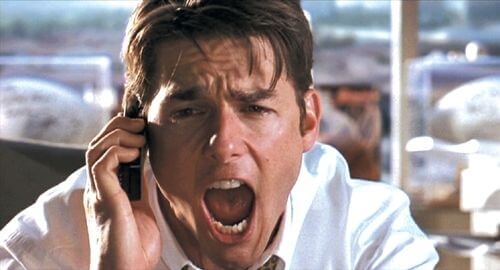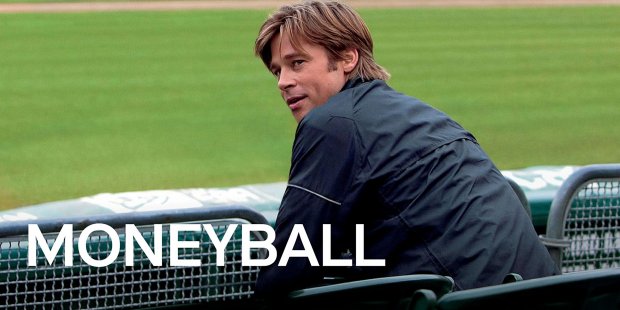By guest writer and G&GR stalwart, AllyOz.
Follow the Money Joe
I read an article in The Australian a few weeks back by Robert Craddock, one of their regular rugby league and cricket writers. Craddock suggested that while the decision to employ Eddie Jones seemed to be outgoing chair Hamish McLennan’s worst, the decision to poach Joseph Sua’ali’i on a $1.7m pa, three year deal could be worse still. Craddock argued that Sua’ali’i’s signing could trigger a revenge NRL buying spree of rugby’s best talent, supported by salary cap concessions from the games governing body. I’m not that worried about that, but I still think it was a poor deal.

Like for Like
Firstly, to state my own position, I’m not a huge critic of buying established NRL players, but I think for all the times it’s worked OK there are many more where it hasn’t. Joseph Sua’ali’i’s situation though, is a little different. He has come through both NRL and rugby pathways and excelled in both. In that way, his situation is probably more similar to Berrick Barnes. Barnes was a junior rugby league player in Kingaroy and began playing rugby when he was given a scholarship to Ipswich Grammar, which competes in the Brisbane GPS competition. Wikipedia say he played in the First XV there for a remarkable four years, which suggests he began as a 13 or 14-year-old in the top team. Barnes then had two years with the Broncos, first competing with their then feeder club, the Toowoomba Clydesdales and in 2005 he made his NRL debut for the Broncos as an 18 year old. Berrick played a total of five games for the Broncos that season. Barnes then went on to play 88 Super Rugby games with the Reds and Waratahs and a further 60 games in the premier Japanese club competition. He represented Australia in rugby on 51 occasions and Australia A for another four.
Sua’ali’i has more NRL experience than Barnes, having, at 20 years of age played 45 NRL club
games, as well as six internationals for Samoa. Like Barnes he had a full season for the Roosters feeder club, the North Sydney Bears in the first year of his contract, before being gradually introduced to the NRL. I don’t, personally, have any doubt that Sua’ali’i won’t be able to grasp the complexities of rugby as an outside back. He has played the game as a junior and represented the Australian Schools and U18s in their 2019 victory over New Zealand in 2019, on the wing. That team also included some recognisable names like Harry Vella, Billy Pollard, Zane Nonggor, Tom Hooper, Will Roach, Reesjan Pasitoa, Josh Flook, Joe Brial and Kalani Thomas.

It’s a No Brainer
Signing Sua’ali’i, in principle, doesn’t worry me. But what has always worried me is the amount that rugby paid, a sensational $1.7m a year. Three years earlier, RA had missed out on Sua’ali’i when they could’ve potentially secured his services for $200k a season. The architect of the deal, former RA chair Hamish McLennan, still thinks it was a good deal. He claimed in the weekend papers that the level of interest that it has already brought to rugby justified the decision. McLennan said, “The criticism of him and the deal is crazy. Before he pulls on a jumper, he has generated over $50 million worth of publicity for rugby … and the first time he plays for the Waratahs in front of a full house, he pays for himself. It’s a no brainer.” There’re a couple of things there that I have a problem with.
Firstly, while I’m sure McLennan knows a lot more than me about the value of the advertising dollar, I struggle to work out how he comes up with the suggestion that the deal has generated $50m in publicity for the game. Is it because we led the back page of the major newspapers when the announcement was made? We made the lead article on the back page last week when McLennan was replaced as chair too. Is that prominent news placement worth $50m as well? Some might think it was.
Secondly, he talks about the deal being paid back the first time he plays for the Waratahs in front of a full stadium. Well, the Waratahs held the record crowd for last season at 25,076 for the opening game in the new stadium against the leading Australian team, the Brumbies, and they do hold the record crowd for a Super Rugby game of 61,823 for the 2014 final. His Roosters teammate, Brandon Smith, at the time the deal was announced “it will take a lot more than a winger from the Roosters” for Australia to beat the All Blacks and, I fear, it will take a lot more than a Roosters winger to fill Allianz Stadium’s 42,500 capacity for a Waratahs game – you aren’t going to drag league fans away from their game to watch a 40 game league winger. Thirdly, I take major issue with McLennan’s claims that the decision is a “no brainer”, unless perhaps he meant that little thought went into it.

Doing the Comps
Watch the proliferation of renovation shows on TV these days and one of the first questions the hosts will ask, is “What are the comps?”. I wonder who, if anyone at RA asked the question, what are comparable players being paid. We could start with the list of his teammates from that 2019 Schoolboys and U18 team. Some of them have already had the opportunity to represent the Wallabies, like Zane Nonggor and Tom Hooper. For one that was largely down to injuries and a dearth of available players in his position and the other, while he grew into the position, was a left field pick that ignored more experienced players like Michael Hooper and Pete Samu. Some others like Flook are now established SR players while others like Brial are just emerging.
I will rely heavily in this analysis on figures produced by John Winter from Rugby Dome who gives a breakdown of earnings across different competitions. According to Rugby Dome, first contracts for Australian Super Rugby players begin at around $40k pa, rising to $80–130k pa in their early careers and then over $200k for more senior players before they make Australian representative teams. The highest paid Wallaby currently is Rory Arnold, who signed a contract with his Japanese club for a record $1.5m pa. The previous highest paid Wallaby was former captain and 125 test veteran, Michael Hooper who reported earnt $1.38m pa (Rugbypass). So the Sua’ali’i deal would make him the highest paid player in Australian rugby history, including those playing at overseas clubs, for a player who hasn’t played the game in four years and is yet to represent his state or country at a senior level.
But how about his compatriots in rugby league. In 2023, news.com.au released estimates for the best paid players of the year. I’ve listed them, their estimated playing salary and their position. Kalyn Ponga (fullback) $1.4m, Nathan Cleary (halves) $1.3m, Cam Munster (halves) $1.25m, Daley Cherry Evans (halves) $1.2m, Luke Brooks (halves) $1.15m, Tom Trbojevic (fullback) $1.15m, Ben Hunt (halves) $1.1m, James Tedesco (fullback) $1.1m, Addin Finua Blake (middle forward) $1.1m, Mitchell Moses (halves) 1.05m.
The McLennan negotiated deal would place Sua’ali’i above even the highest paid NRL player, many with multiple premierships, State of Origin victories and Australian or other international tests behind them. For the most part they’re halves or ball playing fullbacks. Sua’ali’i has yet to represent his state in rugby league and he plays on the wing and in the centres, he currently has two, perhaps three players ahead of him at his club in the fullback position and hasn’t been considered in the halves. I would estimate that he’s possibly earning somewhere between $450-600k and at his best in his current position, he could earn $800–900k based on the best players in these positions. No wonder his manager took the offer.
So how about the rest of the rugby world? Flo Rugby (April 2023) lists the top ten best paid rugby players in the world as follows (they’re listed USD which I’ve converted to Australian dollars based on an AUD/USD rate of 0.65). Handre Pollard $2.7m, Finn Russell $1.92m, Charles Piutua $1.92m, Owen Farrell $ 1.6m, Cheslin Kolbe $1.5m, Maro Itoje $1.5m, Dan Biggar $1.5m, Morgan Parra $1.2m, Steven Luatua $1.2m and Johnny Sexton $1.2m. Rory Arnold’s deal isn’t covered in this list, and I’m not sure why, but let’s assume it’s covered the major players. Other players like Beauden Barret and Eben Etzebeth have previously earned or will earn, in Eben’s case, around $1.5m – this contract puts Joseph up there with them all. The Sua’ali’i contract is worth as much or more than the salaries of all but four of the world’s highest paid rugby players including dual World Cup winners, Championship winners, established international players, players who can run a team and change a game. The kid hasn’t played a single senior club or international game.

Playing with the big boys
McLennan has defended the deal based on the potential increased earning capacity for the game, but the comparisons suggest only the very best players in the world, in much stronger TV markets for rugby and at clubs with billionaire owners, can afford the sort of dollars he confirmed last week Sua’ali’i will be paid. The Top 14 recently extend its broadcast deal with Canal+ for EUR 113m pa – that’s AUD 187m, and that’s just for club games, not for French internationals or their share of the Six Nations. Compare that to Australia’s broadcast rights of just AUD 30m, most of the value of which comes from the rights to broadcast the Wallabies games. Neither the earning capacity of the player or the size of our market justify the price paid.
McLennan also claimed that a significant (as much as half) of Sua’ali’i’s wage would be coming from sources outside of RA and he appeared to use this as a justification for the amount paid. However, regardless of where the money comes from, the outright price is now in the market and that means it has become the benchmark for every player contract negotiation. Player managers will now make a judgement about their player’s worth based on this deal. It has effectively corrupted the player market and could force existing players in similar positions who have already established themselves to look to other codes or to overseas markets with a much greater capacity to pay and it risks accelerating the export of players if it can’t be matched. It also makes it more difficult to repatriate players who are currently overseas.
Of course, I don’t think it was ever about what was a reasonable amount based on the player’s value to his club or his country. I think there were probably two things motivating it, a grand marketing ploy and a bit of gamesmanship. McLennan has already admitted to as much in his comments, saying how the contracting had already paid dividends before he’s pulled on a boot for his rugby side. The strategy is almost a direct copy of the AFL’s signing of Israel Folau and Karmichael Hunt, two big names in the NRL, to support the introduction of the Greater Western Sydney Giants and the Gold Coast Suns. But there’s a big difference between the two deals. For one, the AFL has enormously deep pockets to underpin the move. For them it could potentially be marked down to the marketing budget; for rugby, the annual cost is 5% of their total broadcast revenue for the year – and that’s a lot. Secondly, the AFL had the ground game to support it, AFL in more schools, development officers, giveaways, a massive advertising budget, new posts at schools and in parks. They knew they could take on the NRL because they had the resources to compete. Sun Tzu in the Art of War, suggests, “If your enemy is in superior strength, evade him” and it’s possibly captured even better in the bible quote from Luke 14:31 “Or what king would go to war against another king without first sitting down with his counsellors to discuss whether his army of 10,000 could defeat the 20,000 soldiers marching against him?” Instead, we looked to antagonise an enemy with superior strength when we were least able to defend ourselves and we may yet pay a huge price. It may have been hubris, based on the expectation that a new coach would get us winning again and private equity investors would bolster the game’s finances and provide the ammunition we were missing, but, if that was the plan it failed on both counts.

Pay him what he’s worth, when he’s worth it
I have nothing against young Sua’ali’i. He’s a talented young player, and I’d like to encourage all young men and women who’re playing rugby league, if they’re interested, to give this game a go. As a 20 year old rugby league player (of rather limited ability) I did exactly that and it’s a decision that has given me a much joy, excitement, friends and opportunities both socially and in business. I have no doubt that, with good coaching, he’ll excel in our game. But the price that’s been paid for him to come across to our game bears no resemblance to his market value. It places a young talented junior player with very limited rugby experience, in a position where we have relatively good stocks, at the same value as one of the top five players in the world, and, at the same time, destabilises the local player market. Sua’ali’i could become a household name (get busy on your apostrophe key if that’s the case). He may be world renowned and inspire generations of young Aussie boys and girls to follow him and take up the game, but let’s wait until he gets to that stage before we start paying him like it.


